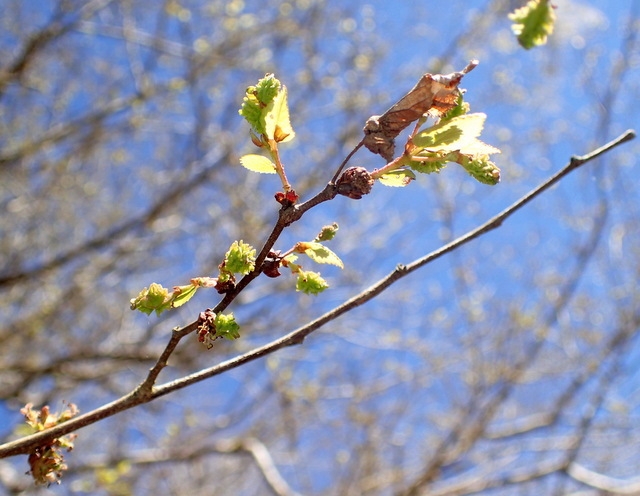Planertree
(Planera aquatica)
Planertree (Planera aquatica)
/
/

mfeaver
CC BY 4.0
Image By:
mfeaver
Recorded By:
Copyright:
CC BY 4.0
Copyright Notice:
Photo by: mfeaver | License Type: CC BY 4.0 | License URL: http://creativecommons.org/licenses/by/4.0/ | Rights Holder: mfeaver | Publisher: iNaturalist | Date Created: 2021-02-23T12:44:23-08:00 |































Estimated Native Range
Summary
Planera aquatica, commonly known as Planertree or Water-Elm, is a deciduous tree native to the lowland floodplain forests, swamps, and wetlands of the Southeastern United States. It typically grows to a height of 25-35 feet (7.6-10.7 meters) and a width of 20-30 feet (6-9 meters), with a rounded crown and spreading branches. The bark is gray and ridged, and the tree produces inconspicuous greenish flowers in the spring, followed by small, winged fruits that are attractive to wildlife. The leaves turn yellow in the fall, providing some seasonal interest.
Planertree is valued for its adaptability to wet conditions and is often used in riparian plantings, naturalized areas, and as a component of wetland restoration projects. It is tolerant of both full sun and partial shade and prefers medium to wet soils with poor to moderate drainage. While not commonly found in the nursery trade, it can be a useful tree for difficult wet sites. Care should be taken when planting Planera aquatica, as it can develop surface roots that may interfere with mowing or pavement. It is also susceptible to leaf spots and cankers, though these are generally not life-threatening to the tree.CC BY-SA 4.0
Planertree is valued for its adaptability to wet conditions and is often used in riparian plantings, naturalized areas, and as a component of wetland restoration projects. It is tolerant of both full sun and partial shade and prefers medium to wet soils with poor to moderate drainage. While not commonly found in the nursery trade, it can be a useful tree for difficult wet sites. Care should be taken when planting Planera aquatica, as it can develop surface roots that may interfere with mowing or pavement. It is also susceptible to leaf spots and cankers, though these are generally not life-threatening to the tree.CC BY-SA 4.0
Plant Description
- Plant Type: Tree
- Height: 25-35 feet
- Width: 20-30 feet
- Growth Rate: Slow
- Flower Color: N/A
- Flowering Season: Spring
- Leaf Retention: Deciduous
Growth Requirements
- Sun: Full Sun, Part Shade
- Water: Medium
- Drainage: Medium, Slow
Common Uses
Low Maintenance, Water Garden
Natural Habitat
Native to lowland floodplain forests, swamps, and wetlands in the Southeastern United States
Other Names
Common Names: Water-Elm, Water Elm
Scientific Names: , Planera aquatica, Planera ulmifolia, Planera gmelinii, Abelicea aquatica, Planera americana, Planera richardii, Ulmus aquatica,
GBIF Accepted Name: Planera aquatica J.F.Gmel.